This article was co-authored by Laura Marusinec, MD. Dr. Marusinec is a board certified Pediatrician at the Children's Hospital of Wisconsin, where she is on the Clinical Practice Council. She received her M.D. from the Medical College of Wisconsin School of Medicine in 1995 and completed her residency at the Medical College of Wisconsin in Pediatrics in 1998. She is a member of the American Medical Writers Association and the Society for Pediatric Urgent Care.
There are 19 references cited in this article, which can be found at the bottom of the page.
wikiHow marks an article as reader-approved once it receives enough positive feedback. In this case, 93% of readers who voted found the article helpful, earning it our reader-approved status.
This article has been viewed 725,736 times.
Have you fallen while motorcycling, biking, skateboarding, or skating and scraped a patch of skin? If so, you are suffering from a type of friction burn known as road rash. This condition can be painful, but there are steps you can take to make sure you’re alright and to start the healing process.
Steps
Determining the Extent of the Damage
-
1Move to a safe area, if possible. If your accident happens in a dangerous area, such as in the middle of a road, you should move yourself to a safer area (off the road) if you are able to. That way, you will reduce the danger of further injury.
-
2Stabilize life-threatening injuries. Ensure that you (or the injured person) can move freely, and that there are no broken bones. If either is the case, then stop immediately and call or direct someone nearby to call your local emergency number.[1]
- If a head injury has occurred, check for a concussion, and seek medical care immediately.
Advertisement -
3Assess the severity of the wound. If you cannot see the wound well yourself, ask someone for help. Call the emergency number in your area if the wound:[2]
- Is deep enough to see fat, muscle, or bone.
- Is spurting blood. If it is, put pressure on the wound with your hands, or clothing or other material while you wait for help. This will help to slow the bleeding.
- Has edges that are jagged and far apart.
-
4Determine if you have other injuries. Some damage may be hidden below the skin, where you cannot see signs of it. If you were knocked unconscious, feel confused, have limited range of motion, or extreme pain, consider seeing a doctor immediately for medical assistance.
Treating the Wound
-
1Wash your hands before treating the wound.[3] You do not want to cause an infection when treating your road rash, so wash your hands thoroughly with soap and warm water before starting to take care of it. If you want extra protection, you can also put on disposable gloves before starting to clean the wound.
-
2Stop any bleeding. If there is any bleeding on your wound, stop it by applying pressure on the site.
-
3
-
4Wash the wound. Use antibacterial soap and water to clean around the wound, but try not to get soap in the wound itself, as this can cause irritation.[8] This will help to wash away dirt and bacteria and keep away infection.
-
5Remove any debris. If anything is stuck in the wound, like dirt, sand, splinters, etc., use tweezers to carefully remove this material. First clean and sterilize the tweezers by rubbing them with a cotton ball or gauze soaked in isopropyl alcohol.[11] [12] Rinse with cool water once the debris is removed.
- If dirt or other material is lodged so deep in the wound that you cannot get it out, contact a doctor.
-
6Gently pat dry. Once you have rinsed and washed the wound, gently use a clean cloth or towel to dry the area. Patting rather than rubbing it dry will help you avoid unnecessary pain.
-
7Apply an antibiotic cream, especially if the wound was dirty. This can deter infection and help the wound as it heals.[13] [14]
- There are numerous types of antibiotic creams and ointments, containing different active ingredients or combinations (bacitracin, neomycin, and polymyxin, for example). Always carefully follow the directions provided with your cream regarding the amount to use and method of application.
- Some triple-antibiotics, such as Neosporin, contain neomycin, which can cause contact skin allergies. If you notice redness, itching, swelling, etc. after using one of these products, stop using it and switch to one containing polymyxin or bacitracin, but no neomycin.
- If you cannot use a topical antibiotic cream for any reason, then apply petroleum jelly or Aquaphor to the wound area. This will keep the site moist as it heals.
-
8Cover the wound. Make sure to cover your wound with a bandage to protect it from dirt, infection, and irritation from clothing during the time it needs to heal. A non-stick bandage such as a Telfa pad is preferable, or sterile gauze may be held in place with tape or an elastic band.[15]
-
9Elevate the wound. Keep the wound elevated at or above the level of your heart as much as possible will help to reduce swelling and pain. This is most beneficial in the first twenty-four to forty-eight hours after your accident, and is especially important if your wound is severe or infected.[16]
Caring for the Wound as it Heals
-
1Apply fresh bandages as needed. Change the bandage covering your wound daily, or more frequently if it becomes wet or dirty.[17] Wash any dirt away from the area using water and an antibacterial soap, as before.
-
2
-
3Elevate the wound. Continuing to keep the wound elevated at or above the level of your heart as much as possible will help to reduce swelling and pain. This is especially important if your wound is severe or infected.[20]
-
4Manage any pain. Take an over-the-counter pain reliever, like ibuprofen or acetaminophen if you have pain from wound, unless your doctor directs otherwise.[21]
- Ibuprofen is also an anti-inflammatory and may help reduce any swelling.
- If the skin around the wound is dry or itchy, use a moisturizing lotion to relieve this discomfort.
- Wear clothing that will not irritate the wound area. If possible, wear clothing that will not rub against the road rash site while it heals. For example, if the wound is on your arm, try to wear short sleeves; if it is on your leg, try to wear shorts. This will make you more comfortable.
-
5Eat and drink properly. Make sure to drink plenty of fluids (approximately six to eight eight-ounce glasses of fluid, especially water, per day), and to eat healthy foods while you are healing. Staying hydrated and nourished will aid the process.[22]
-
6Take it easy. You will need to rest the wound area as it heals. For example, if the wound is on your leg, you will need to avoid vigorous activities like running and climbing. Avoiding overexertion of the wound area will help it heal.
-
7Pay attention to how the healing is progressing. If you take care of the wound, then generally road rash should heal within two weeks.[23]
- Exactly how fast your wound will heal depends on a number of factors like your age, nutrition, whether or not you smoke, your stress level, if you have an illness, etc. Moreover, antibiotic creams will only reduce your risk of infection, not actually heal the wound faster. If you wound seems to be healing abnormally slowly, check with a medical professional, as it could be a sign of something more serious, like an illness.[24]
-
8Contact a doctor if things seem to get worse, or if the wound appears infected. You will need expert attention: [25] [26] [27]
- If there is dirt or other foreign material in the wound that you can’t get out of it.
- If the wound site becomes more red, swollen, warm, or painful, as these can be signs of infection.
- If red streaks radiate from the wound.
- If the wound site drains pus, especially if it smells foul.
- If you have flu-like symptoms (fever, chills, nausea, vomiting, etc.).
Preventing the Dangers of Road Rash
-
1Wear protective clothing and gear. Wearing proper protective clothing like long sleeves and pants when you are able to will help guard your skin against road rash. If you are participating in activities prone to injury, wear appropriate guards. Using protective gear will greatly increase the chances of you just brushing yourself off and bouncing back.[28]
- For example, consider elbow, wrist, and knee pads when engaging in sports such as skateboarding and skating.
- Wearing a helmet will protect your head from injury in these and other activities, such as biking and motorcycling.
-
2Practice safety. Know how to properly use any equipment related to your activities, such as motorcycles, bicycles, etc. In addition, avoid trying dangerous stunts and other reckless acts. Being careful on the road is an easy way to reduce the risk of road rash.
-
3Make sure your tetanus immunizations are up-to-date. Most road rash wounds have been exposed to dirt, and perhaps metal and other debris. This can mean there is a risk of tetanus infection (lockjaw). Most adults should get a tetanus booster shot if it has been more than five years since their last shot and they get a dirty wound. See your doctor about getting one as soon as possible if you have road rash.[29]
References
- ↑ https://firstaidforlife.org.uk/accidents-road-help/
- ↑ http://www.urmc.rochester.edu/encyclopedia/content.aspx?ContentTypeID=1&ContentID=2978
- ↑ https://patient.uwhealth.org/healthfacts/6820
- ↑ https://www.aafp.org/pubs/afp/issues/2004/0601/p2647.html
- ↑ http://health.williams.edu/files/StudentOnline/SkinInjuries_SO.html
- ↑ https://www.healthywa.wa.gov.au/Articles/U_Z/Wounds-first-aid
- ↑ https://patient.uwhealth.org/healthfacts/6820
- ↑ https://healthyhorns.utexas.edu/HT/HT_cutsabrasions.html
- ↑ http://www.urmc.rochester.edu/encyclopedia/content.aspx?ContentTypeID=1&ContentID=2978
- ↑ https://www.davisregional.com/news-room/why-you-should-stop-using-hydrogen-peroxide-on-wou-13469
- ↑ https://www.uhs.wisc.edu/medical/wound-care/
- ↑ https://www.betterhealth.vic.gov.au/health/conditionsandtreatments/skin-cuts-and-abrasions
- ↑ https://www.aafp.org/pubs/afp/issues/2004/0601/p2647.html
- ↑ https://www.amitpatelmd.com/post/how-to-prevent-road-rash-from-scarring
- ↑ https://www.betterhealth.vic.gov.au/health/conditionsandtreatments/skin-cuts-and-abrasions
- ↑ http://www.healthcenter.vt.edu/assets/docs/WoundCare.pdf
- ↑ http://www.urmc.rochester.edu/encyclopedia/content.aspx?ContentTypeID=1&ContentID=2978
- ↑ http://studentaffairs.centralstate.edu/documents/Student_Self-Care_Guide_001.pdf
- ↑ http://www.healthcenter.vt.edu/assets/docs/WoundCare.pdf
- ↑ http://www.healthcenter.vt.edu/assets/docs/WoundCare.pdf
- ↑ http://www.uwhealth.org/healthfacts/trauma/6820.pdf
- ↑ https://pubmed.ncbi.nlm.nih.gov/26947692/
- ↑ http://www.uwhealth.org/healthfacts/trauma/6820.pdf
- ↑ http://goaskalice.columbia.edu/how-do-wounds-cuts-scrapes-lacerations-heal
- ↑ http://www.urmc.rochester.edu/encyclopedia/content.aspx?ContentTypeID=1&ContentID=2978
- ↑ http://health.williams.edu/files/StudentOnline/SkinInjuries_SO.html
- ↑ http://www.uwhealth.org/healthfacts/trauma/6820.pdf
- ↑ http://www.wakehealth.edu/Health-Central/NMR/Motorcycle-Safety/
- ↑ https://myhealth.alberta.ca/Health/Pages/conditions.aspx?hwid=srape
About This Article
To treat road rash, rinse the wound with cool water, allowing the water to flow over the entire site to wash away any loose debris. Then use antibacterial soap to clean around the area, but don't get soap in the wound as this can cause irritation. Once all visible debris has been removed, apply antibiotic cream and cover the wound with a bandage. If you don't have antibiotic cream, you can use petroleum jelly or Aquaphor to keep the injured area moist as it begins to heal. Bandage the area, and change the dressing daily to make sure the wound is healing properly. To learn more from our Doctor of Medicine co-author, like how to prevent getting road rash, keep reading the article!


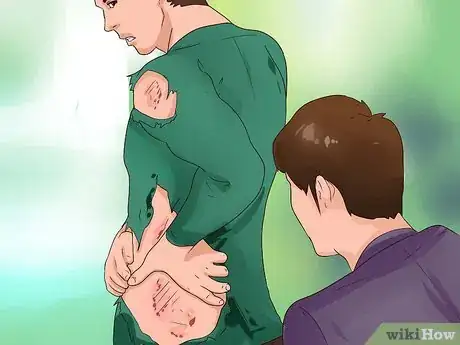










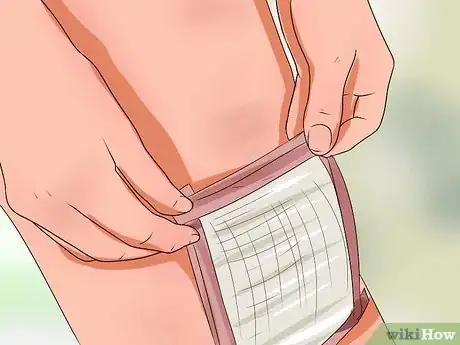
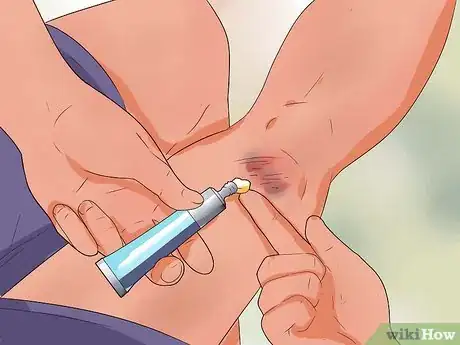

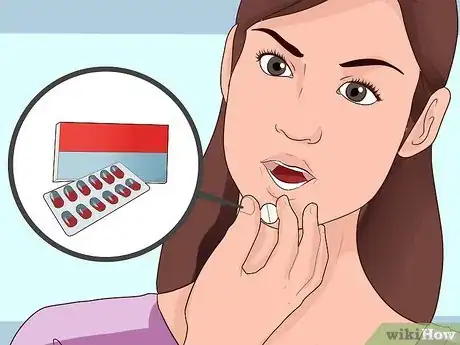

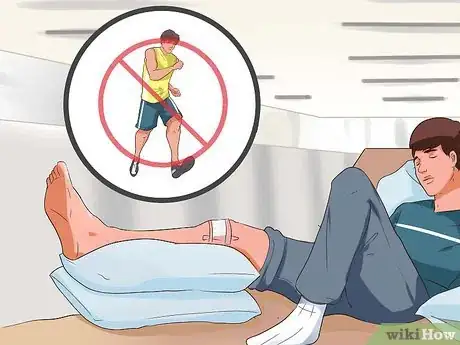

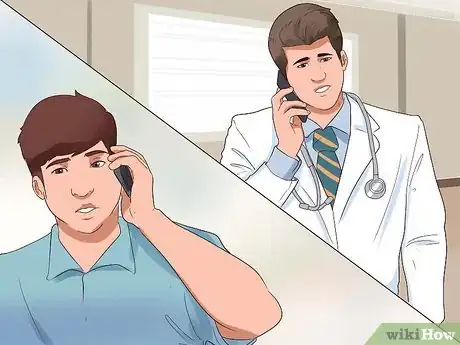

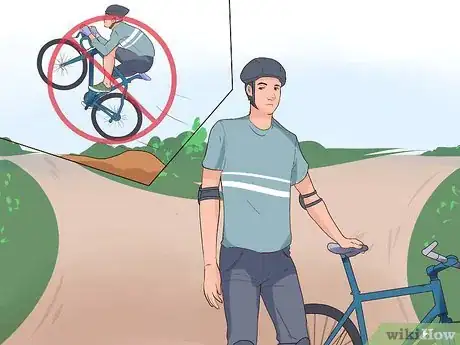


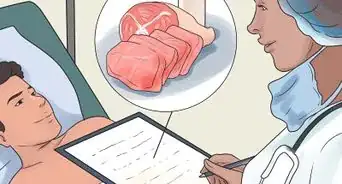
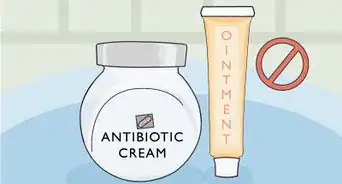
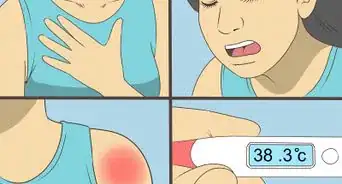



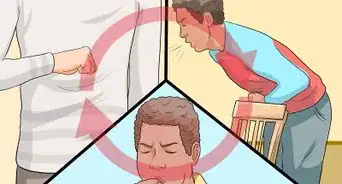
















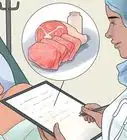






































Medical Disclaimer
The content of this article is not intended to be a substitute for professional medical advice, examination, diagnosis, or treatment. You should always contact your doctor or other qualified healthcare professional before starting, changing, or stopping any kind of health treatment.
Read More...